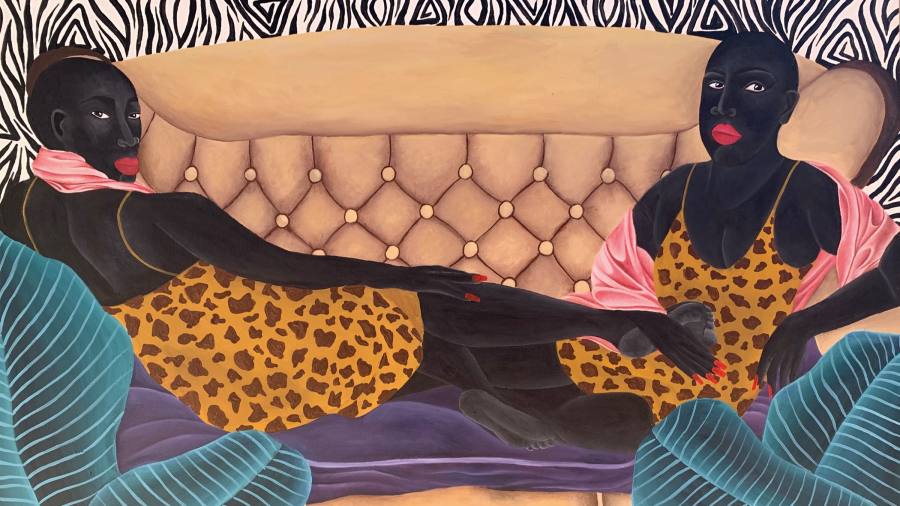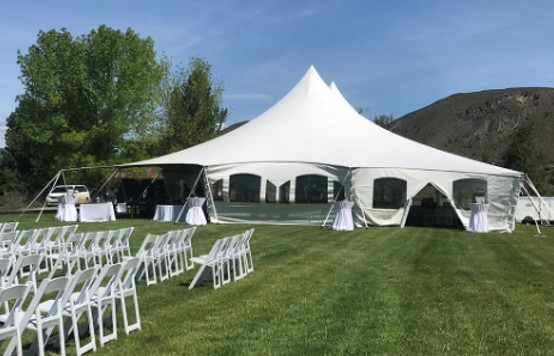The women in artist Danielle Mckinney’s paintings are often smoking, sometimes clothed and lounging on a sofa, other times lying naked on a rug. New Jersey-based Mckinney says each woman is “claiming a moment with her self”. But as an expression of female figuration, they are also part of something bigger – a movement of women painting women that is, she says, “like it’s just coming up from the ground from a seed that was planted a very long time ago”.
One of Mckinney’s paintings is currently included in When We See Us, the exhibition at Cape Town’s Zeitz MOCAA (Museum of Contemporary Art Africa). The survey, of more than 200 works, was created in response to the recent, global resurgence of black figurative painting, says chief curator and museum executive director Koyo Kouoh. And while the wide-ranging exhibition features work both depicting and painted by men and women, there is a strong subnarrative that explores how women represent themselves today. “There’s something almost atavistic about painting the figure… an undeniable human need to see ourselves,” says Kouoh. At the show’s opening gala, resplendent in a gold lamé dress, she explains that the exhibition is “a setting of a shared intention to move away from the feelings of lack or pain or loss or struggle, and charge towards the reality of abundance. Of opulence. Of swag. Of aesthetics. Of delight. Of favour. Of joy. Of desire.”

The theme is strikingly illustrated by the show’s hero image by 23-year-old South African artist Zandile Tshabalala. Two Reclining Women is a riposte to the art-historical reclining nude, its two figures clad in leopard-print slips and wearing red lipstick. “It has this lushness, this beauty, but a painting like this – from a young black painter in Johannesburg in the context of post-apartheid – is utterly political,” says Kouoh, who sees Tshabalala as one of a number of artists who are “embodying their gender as women, but also embodying blackness in a bold, novel, unapologetic way”. She also points to a painting by Wangari Mathenge, a self-portrait of the Chicago-based Kenyan artist, scantily clad and lounging on a sofa, her gaze a challenge to the viewer. “It’s full of assertion,” says Kouoh. “And I love it. It’s extremely empowering.” The exhibition is sponsored by Gucci, which is helping to take the discussion to a broader audience via its social channels, bringing these paintings about representation and identity back into the online spaces that often influence them.

Women painting women is, of course, not a new phenomenon. In the late 19th and early 20th centuries, artists such as Suzanne Valadon and Paula Modersohn-Becker were trailblazers in subverting the male gaze. Later, the gamut runs from Alice Neel (whose retrospective opens at the Barbican next month) to Chantal Joffe and Jenny Saville. But representation of women artists in institutions has been slow in coming. A 2019 study of major US art museums revealed that 12.6 per cent of the collections’ artworks were by women – a small percentage but an improvement on the statistic plastered on a 1989 poster created by the art collective Guerrilla Girls. It read: “Do women have to be naked to get into the Met Museum? Less than 5 per cent of the artists in the Modern Art Sections are women, but 85 per cent of the nudes are female.” The artwork also featured a gorilla-masked version of a 19th-century reclining nude – Grande Odalisque (1814) by French painter Jean-Auguste-Dominique Ingres.

For New York-based artist Danielle Orchard, the well-established canon of art history is often a starting point for her tender and humorous paintings, which show women drinking wine, chatting on the phone or soaking in the bath. “I’m interested in continuing what Picasso and Matisse began, but from a position of greater empathy,” she says. “I’ll graft my own experiences onto this art-historical framework. I wouldn’t say I’m subverting the forms, more complicating and broadening a narrative.” For one painting, Orchard began by looking at Woman Before the Mirror (1912) by Ernst Ludwig Kirchner: “I don’t think it was intended, but it looks like the model is trying to adjust her bra. It felt like something I do regularly, so I borrowed it.” Other works are yet more personal, including one in progress for an upcoming solo show at Perrotin in New York, opening in April, which shows a woman dreaming, “and her shadow is pregnant”, says Orchard, adding: “My husband and I have been trying to have a child.”
Orchard’s figurative practice is informed by life-drawing classes, which she took at art school. “I also modelled in those classes because it was one of the better‑paying jobs.” It’s an experience that plays into another of her new paintings – a large diptych of a woman sculptor, working from a woman model. “My approach to the nude continues to shift from painting to painting,” she continues. “Sometimes I view it as a way of excluding the viewer. Other times it’s meant to invite the viewer in.”


Life drawing is also at the root of Christina Quarles’s paintings. “As somebody that identifies as a cis woman, as a queer person, as multiracial, I find it radical to be able to use those more classical forms,” says the LA artist, whose vibrantly coloured and amorphous compositions explore fluidity of identity. While her figures are warped and distorted – “there are more limbs than then add up to the amount of faces”, she says – the result is “a sort of elegant beauty”.
Fellow LA-based artist Hayv Kahraman’s references to classical painting and sculpture is compounded by her experience as an Iraqi immigrant studying art in Europe. Her women are often eerily contorted, drawn from films she makes and grouped into decorative yet unsettling forms. “They’re sort of floating, place-less – an expression of my psyche as an immigrant,” she says. “But at the same time my body is fetishised. It’s an enticement that is both alluring and dangerous.” Together, she says she “see[s] them as a collective of marginalised bodies that have lived on the periphery of society, like an immigrant or refugee”.


Scottish artist France-Lise McGurn paints overlapping figures combined with colour to suggest “a feeling or rhythm”. Her recent booth at The Armory Show in New York was “to do with being a mother, being a certain age, but still being sexual”, she says. “A lot of my work is about being in a crowd or being in a club, and remembering being surrounded by people. It’s about joy, partying, ecstasy, abandon.” The figures in McGurn’s installation were pulled from magazine imagery, adding another layer to the work about idealised notions of beauty – something that is a recurring theme.
Her Armory Show booth was a swift sell-out, with Simon Lee Gallery fielding multiple requests for new and site-specific works from collectors, while Sotheby’s sold a painting for $60,480 (over a $30,000-$40,000 estimate). At Frieze London a couple of weeks later, Pilar Corrias gallery sold a series of paintings and drawings by Kahraman within a few hours of the fair’s opening. And the words “crushing demand” have been used to describe the market for Orchard’s paintings. One that she donated to be sold for charity at a Christie’s auction in 2021 was offered with a $5,000-$8,000 estimate and sold for $287,500.

Another artist generating a collector buzz is Jenna Gribbon, whose portraits of her partner, the musician Mackenzie Scott, are much sought after. One painting shown by gallery consortium LGDR at Paris+ par Art Basel in October was reportedly snapped up for $100,000, and when New York’s Frick Collection displayed one of her semi-nude portraits last year, it did so beside a Hans Holbein.
Back on the walls of Zeitz MOCAA, there’s a small and intimate painting by 29-year-old London-based Somaya Critchlow, who draws women in almost porn-like poses with a Renaissance reverence. Nearby are works by 29-year-old, Zimbabwe-born, London-based Kudzanai-Violet Hwami; 28-year-old Londoner Sahara Longe; and sublimely skilful paintings by 31-year-old self-taught Tanzanian artist Sungi Mlengeya, in which the women’s clothes and the background merge into a flat, white, negative space.
Through the sensual and alluring medium of paint, all these artists are delivering complex, individual narratives in a way that somehow also feels universal. “The figures in my paintings are not me,” says Mckinney. “But I hope that they’re you.” The long historical canon of representation of women is being well and truly shaken-up.
Victoria Woodcock travelled as a guest of Gucci to the opening of When We See Us: A Century of Black Figuration in Painting





More Stories
Special Tour “Painting History” Showcases Two Exhibitions at The Hood: “Historical Imaginary” and “Kent Monkman: The Great Mystery”
The Ambassadors by Hans Holbein the Younger | History Of The Painting
14 Groundbreaking African American Artists That Shaped History